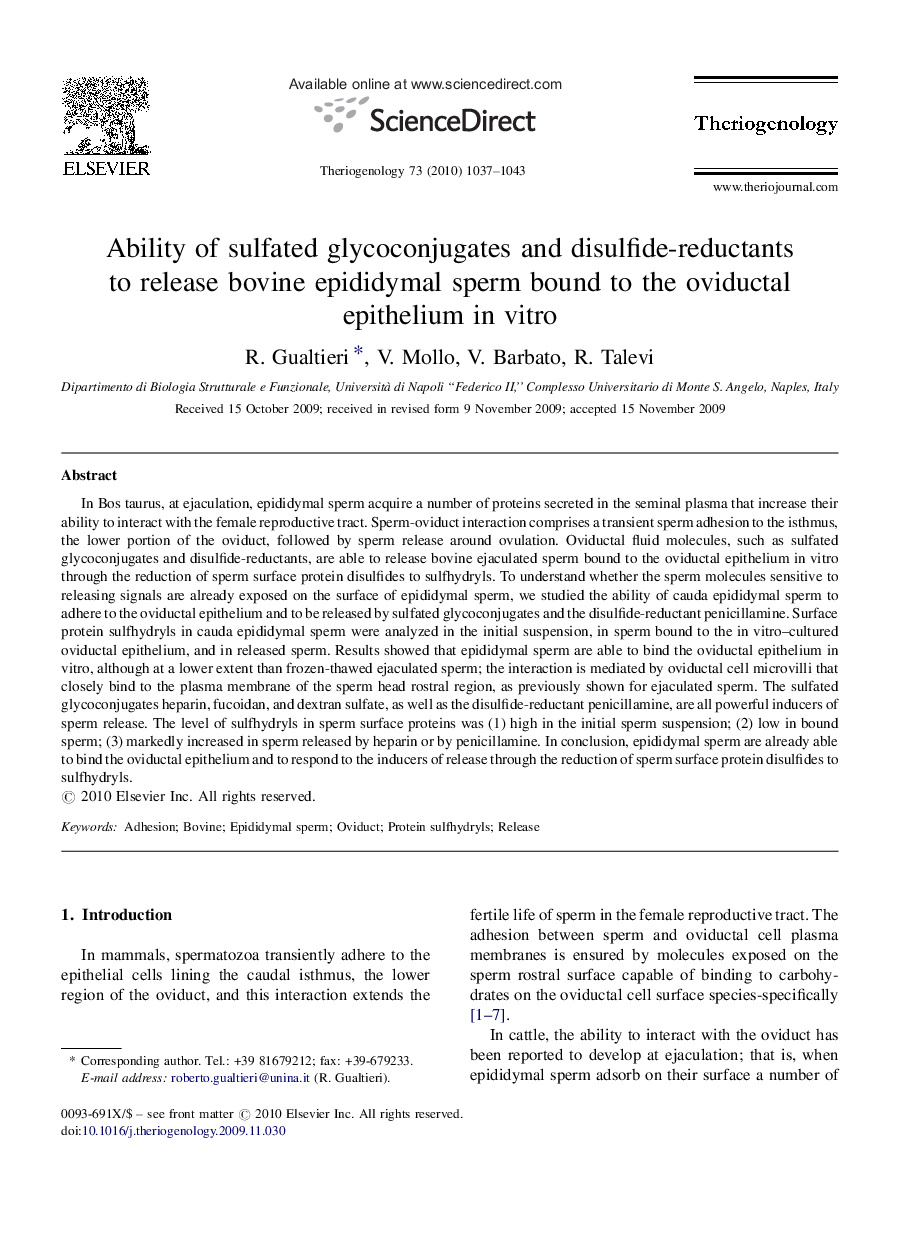| کد مقاله | کد نشریه | سال انتشار | مقاله انگلیسی | نسخه تمام متن |
|---|---|---|---|---|
| 2097892 | 1082572 | 2010 | 7 صفحه PDF | دانلود رایگان |

In Bos taurus, at ejaculation, epididymal sperm acquire a number of proteins secreted in the seminal plasma that increase their ability to interact with the female reproductive tract. Sperm-oviduct interaction comprises a transient sperm adhesion to the isthmus, the lower portion of the oviduct, followed by sperm release around ovulation. Oviductal fluid molecules, such as sulfated glycoconjugates and disulfide-reductants, are able to release bovine ejaculated sperm bound to the oviductal epithelium in vitro through the reduction of sperm surface protein disulfides to sulfhydryls. To understand whether the sperm molecules sensitive to releasing signals are already exposed on the surface of epididymal sperm, we studied the ability of cauda epididymal sperm to adhere to the oviductal epithelium and to be released by sulfated glycoconjugates and the disulfide-reductant penicillamine. Surface protein sulfhydryls in cauda epididymal sperm were analyzed in the initial suspension, in sperm bound to the in vitro–cultured oviductal epithelium, and in released sperm. Results showed that epididymal sperm are able to bind the oviductal epithelium in vitro, although at a lower extent than frozen-thawed ejaculated sperm; the interaction is mediated by oviductal cell microvilli that closely bind to the plasma membrane of the sperm head rostral region, as previously shown for ejaculated sperm. The sulfated glycoconjugates heparin, fucoidan, and dextran sulfate, as well as the disulfide-reductant penicillamine, are all powerful inducers of sperm release. The level of sulfhydryls in sperm surface proteins was (1) high in the initial sperm suspension; (2) low in bound sperm; (3) markedly increased in sperm released by heparin or by penicillamine. In conclusion, epididymal sperm are already able to bind the oviductal epithelium and to respond to the inducers of release through the reduction of sperm surface protein disulfides to sulfhydryls.
Journal: Theriogenology - Volume 73, Issue 8, May 2010, Pages 1037–1043